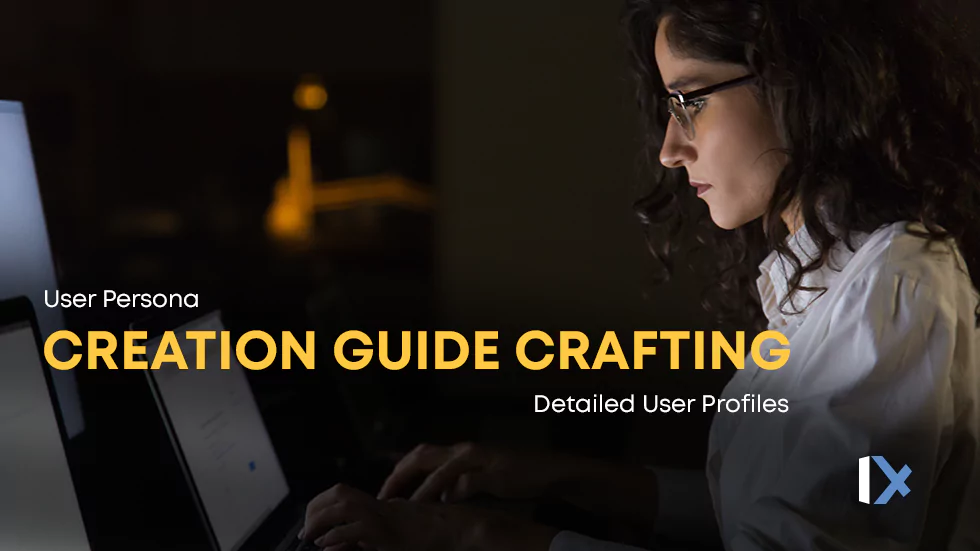User Persona Creation Guide: Crafting Detailed User Profiles
Provide a step-by-step guide on creating effective user personas, including tips for gathering user data and insights.

User personas play a pivotal role in UX design, offering designers a humanized understanding of their target audience. In this guide, we’ll explore the nuanced process of creating effective user personas, emphasizing the importance of this foundational step in the design journey.
Understanding the Importance of User Personas
User personas inject a human touch into design, enabling designers to empathize with users and create more intuitive, user-centric products.
For instance, consider a design team working on a fitness app. Personas could include avid gym-goers, busy professionals seeking quick workouts, or individuals with specific health concerns—all requiring tailored user experiences.
Defining Your Purpose and Goals
Before delving into the creation of user personas, it’s crucial to articulate the purpose and goals of your design project.
Consider a travel app aiming to enhance the booking experience. Are the goals centered around simplifying navigation, improving booking efficiency, or providing personalized travel recommendations?
Clear objectives ensure personas align closely with the project’s vision.
Conducting User Research
To construct robust user personas, a combination of quantitative and qualitative data is essential. Quantitative data, such as age, location, and device preferences obtained through surveys, can reveal overarching trends.
Meanwhile, qualitative insights from interviews may uncover specific user behaviors, like a preference for last-minute bookings or a desire for seamless payment options.
Identifying Patterns and Themes
Analyze the collected data to identify recurring patterns and themes. In the context of a social networking app, patterns may include a desire for easy photo sharing, preferences for real-time updates, or concerns about privacy settings.
These insights form the foundation for constructing personas based on real user behaviors and preferences.
Creating Detailed Personas
Constructing user personas involves detailing demographic information, goals and objectives, pain points and challenges, as well as behavior and usage patterns.
For instance, in the context of a project management tool, a persona might be a project manager with a goal to streamline team collaboration, facing challenges related to tight deadlines and multitasking.
Humanizing Personas with Real Stories
Elevate your personas from mere representations to relatable entities by incorporating real stories or scenarios.
In the context of an e-commerce platform, imagine a persona named “Shopaholic Sarah,” a busy mom who values quick checkouts and personalized recommendations.
This approach adds depth and empathy, enabling designers to envision how personas would engage with the product in various situations.
Validating Personas with Stakeholders
Collaboration with stakeholders is pivotal in refining and validating personas. Engage with cross-functional teams, including developers, marketers, and product managers, to gather diverse perspectives.
For instance, the marketing team might emphasize the importance of visual appeal for personas targeting a younger demographic, validating and refining the personas accordingly.
Using Personas in Design Decision-Making
Tailoring user interfaces and optimizing user journeys based on persona insights is integral to the design process. In the context of an educational app, consider a persona named “Learning Lucy,” a student seeking interactive content and progress tracking.
Aligning design decisions with Lucy’s preferences and addressing specific pain points creates a more user-centric experience.
Iterative Refinement
User personas are dynamic entities that should evolve alongside the project. Regularly revisit and refine personas based on user feedback, market changes, or updated project goals.
For example, as the fitness app gains popularity, personas may evolve to include new segments such as seniors interested in low-impact exercises.
Iterative refinement ensures that personas remain accurate and continue to guide the design process effectively.
Conclusion
Crafting detailed user personas is an ongoing and dynamic process that significantly contributes to the success of user-centered design.
This guide aims to empower designers to create personas that go beyond demographics, capturing the essence of user goals, challenges, and unique stories, ultimately fostering more empathetic and impactful designs.